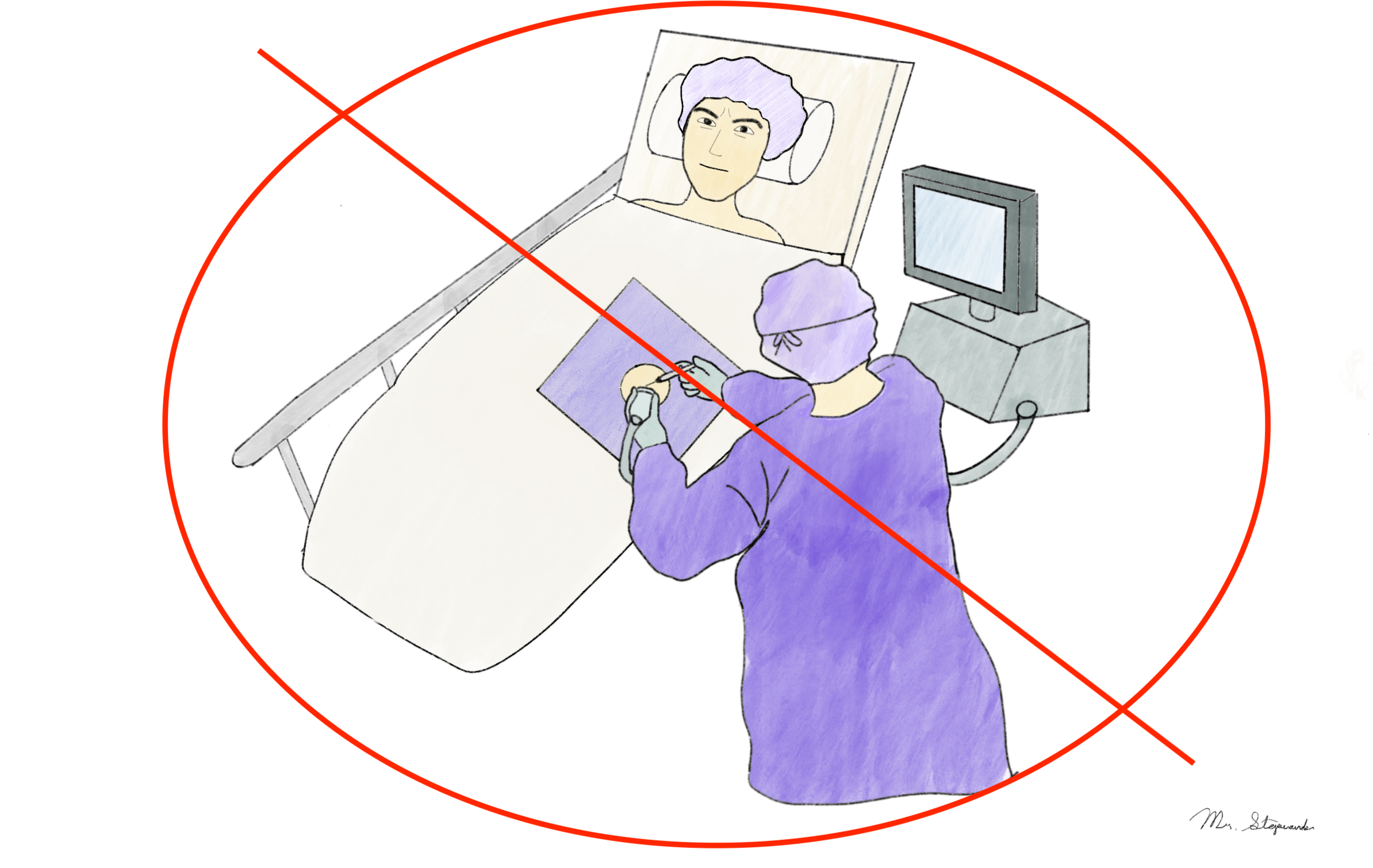OVERVIEW
While a paracentesis may often times seem like a fairly benign procedure, there are some instances in which it is clinically contraindicated. This page discusses these contraindications to ensure that patients do not receive a paracentesis when it is unsafe or not indicated. For more general information on the topic of contraindications within the context of radiology procedures please refer to this page.

ABSOLUTE CONTRAINDICATIONS
While not many, there are a few instances in which a paracentesis has an absolute contraindication (however exceptions may still exist):
- Patients with an acute abdomen requiring surgery: such as patients with a suspected bowel perforation.
- Hemodynamically unstable patients (large volume paracentesis contraindicated): patients who are hemodynamically unstable (such as those in the ICU on pressers) should not have large volume paracentesis performed given that these volume shifts can lead to further hemodynamic instability that can be life threatening to the patient.
- Patients with disseminated intravascular coagulation (DIC): in this setting it can be too dangerous to puncture the abdomen.
RELATIVE CONTRAINDICATIONS
While not always absolute, the following contraindications may need to be taken into consideration.
- Coagulopathies (lab values): classically a INR greater then 1.5 and platelet counts less then 50,000 per cubic millimeter are contraindications to performing a paracentesis given the risk of bleeding. In some cases more liberal transfusion thresholds are used (INR < 2.5, platelets > 30,000), and currently there are new anticoagulation guidelines that make lab values less relevant for procedures such as a paracentesis.
- Pregnancy: given the risk to the developing fetus, generally paracentesis is contraindicated in pregnancy.
- Abdominal wall cellulitis: to avoid contamination of the peritoneal cavity in the setting of an active dermatological infection, a paracentesis should likely be postponed until after an abdominal wall cellulitis is controlled.
- Acute kidney injury: those patients with new AKI may be poor candidates for large volume paracentesis as it can cause large volume shifts and worsen hypotension/decrease renal perfusion.
Page Updated: 04.14.2019